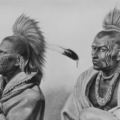The Greatest: Facing Ted Williams
In his very funny Foreword to this book, Baseball Hall of Famer Wade Boggs states that his fellow Red Sox idol Ted Williams “is who John Wayne wanted to be when he grew up.” Possibly so. Virtually everybody else did, this reviewer included. Williams worshippers were everywhere. They still are. “Teddy Ballgame”—aka “the Kid,” “the Thumper,” “The Splendid Splinter”—was, from his high school days, when both the Cardinals and the Yankees tried to sign him, famously talented. He was a star in the game that, in the forties, fifties, and sixties, really was “The National Pastime.” In the age of radio, who didn’t sit on a cozy front porch on summer evenings, listening to ballgames and wanting to be “the greatest hitter who ever lived?”

Facing Ted Williams: Players from the Golden Age of Baseball Recall the Greatest Hitter Who Ever Lived
Edited by Dave Heller
Foreword by Wade Boggs
Sports Publishing, 2013
Hardcover, $24.95
Named for the first President Roosevelt, Teddy Samuel Williams—later on he changed his name to Theodore—was born in San Diego in 1918 to a photographer father and evangelical mother who worked tirelessly for the Salvation Army all her adult life, to her son’s great chagrin. From his earliest years, the boy had just one goal: to have people point to him and remark “There goes Ted Williams, the greatest hitter who ever lived.”
Williams certainly achieved his goal, at least in reputation and lore. But was he really the best? His astonishing major league record makes a strong case: two-time American League MVP, nineteen-time All-Star, league leader in hitting six times, twice winner of The Triple Crown, career batting average of .344, last player to hit above .400 (.406 in 1941), basher of 521 home runs, inducted into the Baseball Hall of Fame on the first ballot five years after retiring in 1961. (One needs to be specific about this because Williams was elected to the IGFA Fishing Hall of Fame, too, making him one of only three professional athletes ever to be given such recognition in more than one sport—the other two were Jim Brown, for football and lacrosse, and Cal Hubbard, who made both the college and pro football Halls as a player and the baseball Hall as an umpire.)
Williams probably deserved two or three more MVP awards than he received—some writers opposed him for behavioral reasons—plus an additional batting title or two—he lost out to Mickey Mantle by a point one year and didn’t have enough at-bats to qualify in another. Ted recorded a hit 34% of the time and reached base a phenomenal 48% of the time. He still holds the MLB record for most consecutive times getting on base, sixteen (Sept. 17-23, 1957). Had the present-day infield fly rule been in effect in 1941, he would have hit .416. To this day, some consider his 1941 season to have been the best of all-time: he had the highest batting average since 1924, hit 37 homers, and got 120 RBI, all unheard-of numbers in that era.
No less an expert than Babe Ruth proclaimed Williams “Rookie of the Year” in 1939, though there was no such official award in the American League yet. Later, when the Babe and The Thumper finally met, the Bambino said, “Hi’ya, Kid. You’re one of the most natural ballplayers I’ve ever seen. And if my (home run) record is broken, I hope you’re the one to do it.”
Perhaps most amazing of all, however, was that such figures could be produced against Cleveland Manager Lou Boudreau’s notorious “Williams Shift” (about which more below) and the fact that Ted lost almost five full seasons in his prime due to military service (he was drafted in 1941 just after Pearl Harbor, served as a Marine fighter pilot until the War’s end, and was called up again to fight in Korea). Virtually all experts believe that, had he played these years, Williams would have broken home run marks for all time and hit for an even loftier lifetime batting average.
Despite this unmatched record of achievement, there have remained some Williams skeptics, people who argue that Mickey Mantle, say, was a more powerful slugger and far better base runner, that Stan Musial was better than Ted at all phases of the game, that Joe DiMaggio was a better “pure” hitter (DiMag set his 56-consecutive-game hitting mark in 1941, thereby winning the MVP award in Williams’ best year), or that Willie Mays was the best ballplayer ever, period. Where does this leave us? Was The Splendid Splinter the greatest hitter or not?
As a means of resolving the decades-old issue, Dave Heller, a sports writer who has worked in Cincinnati, Milwaukee, and elsewhere, had an epiphany: what if former MLB pitchers and others who knew and had faced Williams were to be interviewed about the experience? This inspired though admittedly late idea—it had been over fifty years since Ted’s last at-bat, and many players of that long-ago era were already dead and gone, including Williams himself, who died in Florida July 5, 2002—set Heller on a mission to locate as many living former players as could be found, to interview them, and to sift through the mountains of data that baseball machinery had amassed over seven decades. It was an heroic task, one that eventually put Heller in touch with over 236 former pitchers and players he could chat with in some capacity about The Thumper.
The disciplined volume Heller author ultimately produced—Facing Ted Williams—includes direct reports of conversations with some fifty-one pitchers who faced Williams as well as thirty-three other catchers, infielders, and outfielders who knew Ted personally or were on the field with him at some point. These conversations are enriched by a wealth of statistics as well as by stories told by the admiring old baseballers who had seen Williams at work. It is, on the whole, an impressive accomplishment, a monument to dedication.
It is not surprising that there is a wide range of quality in the interviews. After all, Heller was seeking information and opinions from aging ballplayers, not scholars or historians. Many of those quoted lacked in-depth insight about events experienced decades earlier, and some had virtually nothing worthy to say. Bobby Richardson, for example, the Yankee second baseman for eleven years, who claims to have been Ted’s hunting friend, offers only five brief sentences about a flight he had with Williams during which they talked about hunting, fishing, and Tom Yawkey, the famous Red Sox owner. With the notable exception of former Yankee pitcher Jim Bouton—whose much celebrated expose’ Ball Four (1970) is the most influential sports book ever written—The National Pastime has itself rarely produced articulate spokespeople.
Another difficulty is that none of the players represented in Heller’s book—with the possible exception of Indians’ pitcher Bob Feller—was on anything approaching Williams’ level of ability or knowledge of the game. Many of the interviewees—22 of 84 interviewed in some capacity—were in the big leagues only three years or less, and several of the pitchers actually faced Ted only one or two times. A majority of the players seemed simply to gaze in awe upon the great hitter, having no idea just what it was that so totally separated him from all the rest.
The Thumper was an intimidating presence. A loner much of the time, he did not seek out friendships, frequent bars and restaurants, or engage in small talk, though his good looks and celebrity did almost constantly bring him spectacular female companionship. In some sense, he preferred the company of children, with whom he always had time to chat (usually about baseball) and to whom he was glad to present autographs. This fondness for children made Williams the chief advocate of the celebrated Jimmy Fund, which supports children’s cancer research and treatment; according to the Fund Web site, Teddy was “the single most influential person in helping to raise funds for the Children’s Cancer Research Foundation (now Dana-Farber Cancer Institute).”
There is real meat in some of the interviews though—those of pitchers Feller, Ned Garver, Bob Friend, Jack Harshman, Virgil Trucks, and catcher Del Crandall, are particularly insightful. Several themes appear: Williams’ miraculous eyesight (which did much to make him the great hitter, fisherman, and pilot he was); his ability to concentrate and focus on pitchers so as to learn everything he could about them; the often-observed “fact” that umpires were not willing to call a strike on Ted if he didn’t swing at a pitch (a further testimonial to his visual acuity); the justification for and impact of “Boudreau’s shift”; and the Splinter’s sheer presence, which enabled him to fill and dominate every room he entered and caused all other activity to stop whenever he stepped into the batting cage to take his practice cuts.
Virtually every helpful interviewee had something to say about Williams’ fantastic eyesight. Bob Feller, the man Ted called the best pitcher he ever faced, noted that “trying to throw a fastball by him was like trying to sneak a sunbeam past a rooster in the morning . . . very difficult!” Feller added the obvious, that Williams “had a good eye and very good hand-eye coordination, which is what made him so great.” A far lesser pitcher, John Gray, noted the same: “He had the best eyes I’ve ever seen on a hitter . . . out on the mound I can remember him staring at me; it felt like I was being X-rayed, watching every move you made.” Only Stan Musial, among the other best hitters of the Golden Age of Baseball appeared to share this gift of supremely penetrating eyesight.
So precise was Ted’s vision that he almost always hit balls on the bat’s “sweet spot.” Charlie Kress, a first baseman for several teams, observed that “We used to pick up the bat after he (Ted) took batting practice, and there’d be one spot, one area, which had grass stains on it from the ball . . . just one spot, like he painted it there. Oh, he was unbelievable, really.” Kress added that “he’s the one guy—and this has been documented—that (said) when the ball hits the bat, the bat actually bends a little and the ball flattens a bit . . . that will tell you what kind of eyesight he had.” Teddy Ballgame saw this. No one else could.
 Bob Friend stated that Williams “studied hitting better than everybody . . . He had a photographic memory and knew all the pitchers,” adding that “he was a ball-player’s guy; all the players (unlike many fans and sportswriters) liked him. Everything he did was first-class . . . and the guy did everything.”
Bob Friend stated that Williams “studied hitting better than everybody . . . He had a photographic memory and knew all the pitchers,” adding that “he was a ball-player’s guy; all the players (unlike many fans and sportswriters) liked him. Everything he did was first-class . . . and the guy did everything.”
As for umpires’ unwillingness to challenge Williams on calls, Don Larsen, in particular, the Yankee’s famed perfect game World Series pitcher, hated this: “The only thing I didn’t like (about Williams) was no matter what you did, if you threw the ball down the middle of the plate and he didn’t swing, it would be a ball. He more or less umpired his own game.” Virgil Trucks tells a perhaps apocryphal tale about a game between Detroit and the Red Sox in Boston: “Joe Ginsberg was catching and Williams came up and walked on four straight pitches, and Joe’s questioning the umpire about it. On the last one, he said, ‘Bill’—Bill Summers was the umpire. He said, ‘Bill, don’t you think that ball was a strike?’ And Bill said to Joe, ‘Mr. Ginsberg, Mr. Williams will let you know when it is a strike.’”
Ned Garver tells a similar story: “One time against the Yankees, he had a couple of home runs off the Yankee pitcher, and Yogi (Berra) complained (to the umpire) because he called ball four on him, and the umpire said, ‘Well, at least I held him to one base.’ If you walked him, he only got to first. If you pitched to him, you didn’t [know] what the hell was going to happen!”
But walking Ted was not an attractive option either. As Garver observes, “Walk Williams!? People came from Arizona and Wyoming and places like that to see him hit when we were in Kansas City. They didn’t come to see him walk to first.” One rumor circulating was that the Baseball Commissioner himself discouraged walking Williams for the same reason.
Even so, managers had their limits. As reported by pitcher Bob Fischer, “One time when I was with the White Sox, he (Williams) had three home runs in the game and came up the fourth time with nobody on base and two outs, and they walked him on purpose. [White Sox Manager] Al Lopez said, ‘No one guy is ever going to hit four home runs against my team!’”
Williams’ hitting superiority left opposing managers apoplectic, none less than the Indians’ Lou Boudreau, who in 1946 invented the “Boudreau” or “Williams Shift” as a means of coping with it. With the shift, when Ted came to bat all defensive players but the left fielder moved to the right side of second base, daring the Splinter to simply punch a hit into the virtually empty left side of the diamond. Williams, the greatest of all pull-hitters, stubbornly refused to do so, thinking that to alter his stance and swing in order to push the ball toward left might damage the lethal pull-hitting instrument he had been perfecting all his life. As Garver admiringly observed, Ted “was dedicated and worked exceptionally hard . . . He knew what it took to be a hitter and he didn’t deviate from it . . . If he wanted to, he’d get a hit every cussed time up with the shift on. I’m telling you the God’s honest truth. But he wouldn’t do it.”
Other teams soon emulated Cleveland and employed the shift when Williams came up. It worked to some degree, and even Garver had to admit that “the shift was a good idea because he (Ted) was bull-headed enough to try to hit into it all the time.” When describing Williams, shift-or-not, as “the best hitter I ever saw or ever will see,” Virgil Trucks added “I never saw him hit a ball to the left of second base. Never. He said no, I’m not going into my batting stance to try to go to left field. He wasn’t going to change his batting style.”
Despite widespread use of the shift, Ted continued to flirt with .400 the rest of his career. In effect, he often beat the shift because of the way he hit a baseball. Many fielders quoted by Heller describe Williams as hitting “bullets.” One awed—and intimidated—third baseman, Tom Carroll of the Yankees, when the shift moved him to the right of second base and onto the outfield grass, saw a Williams line drive heading his way “and it was by me! And that line drive came at me not on the dead level, not rising, and not a knuckleball. It came at me like a golf shot. Terrific overspin on the ball . . . It was just amazing . . . I mean, I did play six years of ball in Triple-A and the majors—but I never saw that. I never saw a ball come at me like that.”
Such amazement is expressed by dozens of the interviewees in Facing Ted Williams. The Splinter was impressive in every way. As many here note, he was good at everything he did. Chuck Stevens calls him “a silver-tongued devil” who was still hitting .350 at age forty, when most people were “looking for a LA-Z Boy.” “His ability to the ordinary ballplayer was absolutely awesome. Once you saw him—and Musial was the same with that unorthodox stance—you never forgot it. It was indelibly stamped.”
At bottom, more than being simply “the greatest hitter of all time” (as this writer believes), Ted Williams was also among “the great men of all time.” Heller’s aging interviewees sensed this, as did Wade Boggs, and those who played for the Thumper during his years as manager of the Senators—a demanding task, observed Del Crandall, a major league catcher for seventeen years: “[When Williams was managing] I know it was probably intimidating for hitters to go up there and do their measly little thing when you had the greatest hitter in the history of baseball . . . sitting over there on the bench. I’m sure it was hard to play for him.” Yet in typical fashion, Ted turned the lowly Senators completely around in his first year with them and was named Manager of the Year in 1969.
Success accompanied Ted Williams in everything he did. Heller observes this, as do his interviewees. There has simply been no one else like him. Witness this brief obituary by blogger Steve Sailer, written shortly after Williams’ death:
The baseball slugger was possibly the most technically proficient American of the 20th century, as his mastery of three highly different callings demonstrates . . . Can you think of anybody else who was #1 in America in his main career (hitting a baseball), probably top ten in his retirement hobby (fishing), and roughly top 1000 in his weekend job (fighter pilot)? John Glenn springs to mind as military pilot, astronaut, and Senator, but each career flowed from the previous one. The same is true for Jimmy Doolittle. Williams’ three careers, in contrast, were uniquely disparate.
In 1991, Ted Williams was presented The Presidential Medal of Freedom by President George H.W. Bush, who was himself a pretty fair ballplayer at Yale.
About Robert Chambers
Bob Chambers was born and grew up in North Carolina. He was educated in the public schools of that state and at Duke, Yale, and Brown Universities. For more than three decades he taught American literature and served as an academic administrator at Yale, Bucknell, Western Maryland College (now McDaniel College), and at Trinity College of the University of Melbourne in Australia. He was for sixteen years President at Western Maryland. He also was for five years a Senior Consultant with Marts & Lundy, Inc., a major international firm assisting colleges, universities, and preparatory schools with their fund-raising needs. A dedicated traveler, he has visited 66 countries and five continents, living for a time in England, Ireland, Japan, and Australia, as well as in various parts of the United States. Now retired, he resides in Gainesville, Florida, and the Coachella Valley of California.





